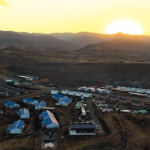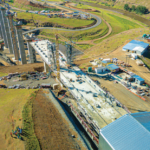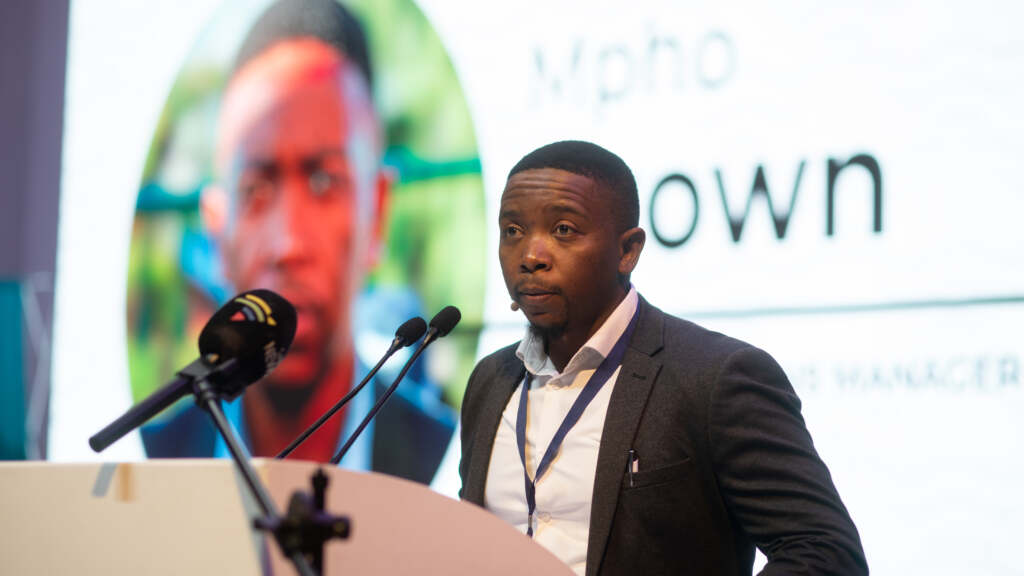Water delivery to South Africa under the Lesotho Highlands Water Project (LHWP) has been temporarily suspended from October 1, 2024, until the end of March 2025. This interruption is to allow for critical maintenance of the steel linings in the transfer and delivery tunnels, aimed at preventing corrosion. In an exclusive interview with Lesotho Highlands Development Authority (LHDA) Divisional Manager for Development and Operations, Reentseng Molapo, we explore the intricacies of this major undertaking and its significant implications for water and power supply in both Lesotho and South Africa over the next six months.
NEWSDAY: Why is this maintenance necessary?
RM: The effort is part of routine maintenance that is carried out according to a routine inspection schedule as recommended by the Operations and Maintenance (O&M) manuals of the tunnels. In September to November 2019, during the inspections of the Transfer and Deliver Tunnels, it was established that the (corrosion protection) painting on all sections of the tunnels that are steel lined was near its end of service life and if left for too long, there was a risk that the steel linings will corrode. The inspection team advised that the tunnel could safely be operated for five (5) years (October 2019 to October 2024). Safe operation of the system significantly beyond the five years is not guaranteed. Therefore, it is crucial to carry out the work now, in order to ensure the integrity and sustainability of the tunnel system long term.
NEWSDAY: Why was this specific six- month period selected?
RM: The six months is based on the calculated time it will take to complete the work, considering the steel lining areas that need working on, the lengths of those segments, and the extent of refurbishment required. The first month of the work is mainly for de-watering the tunnels by pumping water out so that maintenance crews can have safe access to the work areas. It takes about one month to do so, because this has to be done in a slow and steady fashion and ensure that there aren’t any drastic changes in pressure that may compromise the infrastructure. Similarly, the last (one) month of the period will be used primarily for getting water back into the tunnel, in a slow and controlled manner for the same safety considerations. The four months in between is where the main work of maintaining and refurbishing the parts of the tunnel that need attention, will be done.
NEWSDAY: When was the last large-scale maintenance work conducted on the tunnel?
RM: As mentioned, 2019 was the last time a major inspection was carried out which is what ultimately informed this leg of maintenance. The last major maintenance of the tunnels was conducted in 2012.
NEWSDAY: What preparations are needed to, in effect, take the tunnel offline, and how long do these preparations take?

RM: Preparations to take the system offline are numerous and long. As soon as reports of the 2019 indicated that this maintenance work will be necessary, we began to engage all the key role players to ensure sufficient preparation and lead times for all parties. One of the purposes of the Lesotho Highlands Water Project (LHWP) is to enhance the use of Senqu River by storing, diverting, and controlling the flow of Senqu River and its affluents to effect delivery of specified quantities of water to the Republic of South Africa (RSA) and by utilising such delivery system to generate hydro-electricity power in the Kingdom of Lesotho. Therefore, the richest economy in Africa of Gauteng, depends a lot on the water delivered by the LHWP system. Lesotho’s energy supply depends a lot on the system, as the ‘Muela Hydropower Station, supplies roughly 50 percent of Lesotho’s energy demands. Therefore, on both sides of the border, alternative measures had to be put in place to ensure continued and reliable supply of water in Gauteng during the closer, and continued and reliable supply of electricity to Basotho during this time. Both the Department of Water and Sanitation in South Africa and the Lesotho Electricity Company were notified early and began making plans early for alternative supply and other mitigation.
Further, it is important to ensure that project communities that live near the areas where works will be done are engaged early, both for them to be aware of the work that will be carried out, and more importantly, for the opportunities that the work will bring to their areas, including job opportunities, increased economic activity and other infrastructure improvements that may need to be developed or refurbished.
Finally, preparations to identify qualified and proven experts in the works required is of paramount importance, and to do so in clear and transparent fashion, with enough lead time. The procurement processes to identify and appoint the contractor for the works were a key part of the preparation, and sensitizing this contractor to the requisite LHDA guidelines for recruitment of local communities in the works and other beneficiation priorities of the LHDA.
NEWSDAY: Once ready, what is the process of closing the tunnel, and how long does this take before commencement of actual maintenance programme?
RM: As mentioned earlier, the tunnels need to be de-watered, and this will entail a careful process of first, closing off the Intake Gates and Tunnel Isolation gate at Katse Intake Tower. Where water from Katse Dam enters into the Transfer Tunnel so that water flowing from Katse Dam to the Muela Station is stopped. There are points in the delivery tunnel designed for dewatering pumps to be connected and these will be used to conduct the dewatering exercise mentioned earlier. This process is expected to last about one month to completely dewater the tunnel for safe access of maintenance crews to begin the works.
NEWSDAY: What are the challenges that come with closing the tunnel?
RM: Safety is the highest priority of any exercise like this, and therefore, considerations of the water pressure within and outside the tunnels require calculated and controlled dewatering process, emergency preparedness, ventilation and evacuation procedures are all things that have to be considered before closing the tunnels.
NEWSDAY: What does the maintenance work entail? Would you provide a timeline of the processes involved?
RM: Some of the critical steps of the maintenance have already been referred to above: Detailed Inspection and condition assessment; tunnel dewatering and ensuring ventilation and access. Once the maintenance crew is inside the tunnel, the next critical step is surface preparation, cleaning the surface to ensure removal of any sediment, debris and old coating, which can be done using methods such as sandblasting or water jetting, followed by corrosion removal where necessary.
Next would be a process of repairs and refurbishment – with installing of new steel plates or patches where necessary depending on the extent of damage, or full sections of steel lining where the damage is extensive enough to require replacement. A process of applying recoating corrosion protection layers then follow. Testing and quality control to ensure the refurbished surfaces are to the standard required and can withstand water flows without damage. The last stage is a full detailed inspection before the recommissioning of the tunnels and allowing water back into the system. All of these are conducted in a meticulous and highly detailed fashion.
NEWSDAY: What are unique challenges that need to be overcome in this initiative? If so, what plans are in place to mitigate them?
RM: The tunnels are on average about five meters wide in diameter and they require special equipment to reach above head areas. The other tunnels section are vertically oriented and therefore require special teams trained in abseiling to reach the areas to perform the repair work.
NEWSDAY: Do you require any special/unique equipment to complete the maintenance?
RM: The application of corrosion protection require special equipment, special paints that withstand the corrosive content of the delivered water, erosion that may be caused by any debris contained in the water.
NEWSDAY: What is the process of reopening the tunnel and how long is the process expected to take?
RM: The process of allowing water back into the tunnel needs to be done in a slow, calculated and controlled manner, as mentioned for the purposes of ensuring safety, and controlled pressure back into the tunnel. This process is expected to last one month. The team has to put in place a pressure equalization plan, and from that allow controlled reintroduction of water back into the tunnel through the tunnel filling system at Katse Intake and ‘Muela Intake. This is also done in sections, first is the transfer tunnel from Katse to ‘Muela, filling of the ‘Muela dam to allow sections of the delivery tunnel to filled last. There are level sensors used to monitor the water level build up and ensure adherence to the pressure equalization plan.
An important part of the process also involves release of air from the tunnel, and tunnel vents are kept open to allow air to escape as the tunnel fills with water. If ventilation and air release are not done properly, pockets of air may develop and cause uneven pressure distribution.
NEWSDAY: Would you be able to provide an estimated cost of this maintenance programme?
RM: The maintenance work is expected to cost roughly R300 million from start to finish.
NEWSDAY: Would you be able to provide a ballpark figure of how many people will be working on the maintenance?
RM: Roughly 300 people will gain employment during this maintenance period, and many of them from the immediate communities where the work will be taking place.
NEWSDAY: What specialist skills are required for the successful completion of programme?
RM: There are requirements for deep expertise in a host of skills both technical and otherwise. This type of maintenance needs experts in Geotechnical Engineering, Grouting Engineering, Corrosion Protection engineering, Welding and Metal Work, Surface Preparation and Coating Application, Mechanical and Pump System Maintenance, Inspection and Non-Destructive Testing (NDT), Confined Space Entry and Safety, Health, Safety, and Environmental Compliance, as well as Project Management
NEWSDAY: In South Africa, the impact of this temporary closure is a significant reduction in the volume of water reaching Gauteng. How will this programme impact Lesotho?
RM: Lesotho depends on ‘Muela Hydropower Stations to supply a large part (50%) of its electricity requirements. The closure of the tunnels, and subsequently the station, means that the country has to import this additional energy to meet local demand, and that is a huge burden on the government’s purse.
NEWSDAY: Is there anything else you want to add as you wrap up?
RM: It is worth repeating and to emphasise that the closure and maintenance of the steel linings is meant to ensure continued safe and reliable operation of the LHWP, the eventual benefit for the two countries in water supply and electricity generation.
Summary
- In September to November 2019, during the inspections of the Transfer and Deliver Tunnels, it was established that the (corrosion protection) painting on all sections of the tunnels that are steel lined was near its end of service life and if left for too long, there was a risk that the steel linings will corrode.
- One of the purposes of the Lesotho Highlands Water Project (LHWP) is to enhance the use of Senqu River by storing, diverting, and controlling the flow of Senqu River and its affluents to effect delivery of specified quantities of water to the Republic of South Africa (RSA) and by utilising such delivery system to generate hydro-electricity power in the Kingdom of Lesotho.
- On both sides of the border, alternative measures had to be put in place to ensure continued and reliable supply of water in Gauteng during the closer, and continued and reliable supply of electricity to Basotho during this time.

Your Trusted Source for News and Insights in Lesotho!
At Newsday Media, we are passionate about delivering accurate, timely, and engaging news and multimedia content to our diverse audience. Founded with the vision of revolutionizing the media landscape in Lesotho, we have grown into a leading hybrid media company that blends traditional journalism with innovative digital platforms.








